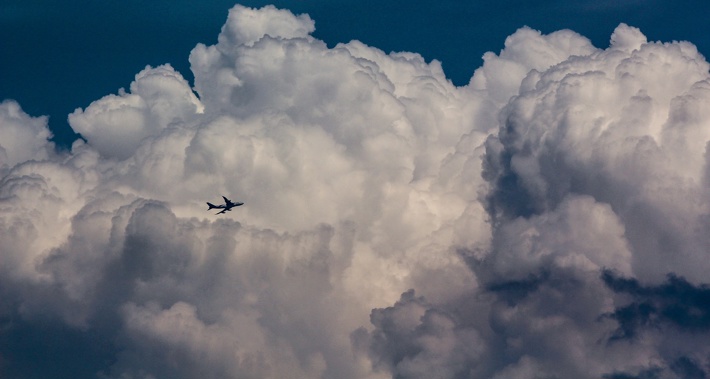
As a plane-spotter and av-fan from way back, the fear of flying isn’t something that gets the better of me. That being said, I feel far happier in a jet aircraft, than a plane with propellers, let alone a helicopter or hot air balloon. However, for many people, the very notion of boarding an aircraft can send them into a state of panic. Recently, I was sitting next to a person who was gripping the armrest at the slightest change in sound or minor turbulence. They were a hyper-nervous flyer, arguably unsettling the people around them.
Apparently, one quarter of us have a fear of flying, a phobia. Like most phobias, which defy logic or reason, dealing to the fear of flying can’t be neutralised by simply glancing over a few data sets on commercial aviation’s spectacularly low fatality count. Similarly, masking your fears by taking medication or drowning yourself in booze – as many do, isn’t a lasting solution. So how can you confront those demons and feel a lot more at ease, in the air? Here’s a few suggestions.
Bone up on the basics on how a plane works. For many people, being scared of flying is borne out of their lack of knowledge on how aircraft are able to stay aloft in the sky. Console yourself by appreciating that a wing moving through the air, is a perfectly normal part of physics. Even if all the engines fail, a jet flying at 35,000ft can glide for nearly 200km.
Understanding turbulence. I admit, turbulence can be unnerving. On some flights, I have experienced clear-air turbulence, which literally comes out of the blue, and can buffet the plane violently. But all aircraft are built to withstand the most extreme, severe turbulence – even if it feels uncomfortable. You are perfectly safe – just stay buckled up, securely. Aircraft designers have improved the way that airplanes shed forces caused by turbulence. When you see the wings flex on the likes of the A350 or 787, that helps reduce the load or force imparted by turbulence.
I have a theory that compared to being bounced around on bumpy or rough roads, turbulence feels a lot worse because we naturally feel so much more powerless and mortal, when our feet aren’t on the ground - and we’re being thrown around. That lack of personal control at 35,000 puts on a new twist on our fight or flight reflex.
Control negative thoughts. It’s easy to catastrophise when you think about flying, whether it’s the wing snapping off or the engine failing. But whatever the negative impulse, always visualise a happy ending where you get off the aircraft safely. Positive thoughts will help reduce anxiety and keep you calm on the flight.
Control your breathing. It’s impossible to panic when you can control your breathing. If you’re feeling anxious, even before you take off, breathe in for four seconds and exhale for four seconds. Combine this with muscle contraction – clenching your buttocks while exhaling is most effective – so it overpowers the nervous signals ripping up and down your spinal cord, helping you to remain calm. Alternatively, try firmly pressing the skin between your thumb and index finger. This pressure point is linked to anxiety and can help you remain calm. These suggestions may sound weird, but anxiety specialists, swear by them.
Talk to the cabin crew. If you’re a nervous flyer, let the cabin crew know, when you’re boarding. They are there to keep you safe and calm. Don’t be afraid to ask questions if you’re worried about anything that’s happening inflight.
Managing claustrophobia. I’m sure most people have felt claustrophobic on a plane from time to time, which can raise anxiety and stress. Use distraction and breathing techniques to calm nerves,
walk around the plane to stretch your legs, and always plan how you will pass the journey. Never board a plane with nothing to do.
Start with realistic goals. Don’t try to blitz your fear of flying by booking a return trip to Europe. Start with short haul flights and go through the journey in your head before you arrive at the airport, visualising a safe take off and landing. Fears and phobias take time to conquer, but persistence will eventually help you overcome them. Search Google, and there are numerous online courses that are geared at taming your fears. Virtual reality programmes are increasingly becoming a commonly deployed tool to help overcome your sky-high anxieties.
If you really feel you need expert assistance your fears, take a course. Being surrounded by professionals who love to fly as well as people who are experiencing the same fears and feelings as you, is reassuring. Flying without Fear is the leading such course in New Zealand, set up nearly 40 years by Air New Zealand and Grant Amos. Grant is still the programme director. Costing $750, the group course runs for four nights, in various venues across the country, culminating in an optional flight at the end. Apparently, it has a 90% success rate. For full details, head to www.flyok.co.nz
Mike Yardley is our Travel Correspondent on Jack Tame Saturday Mornings.
Take your Radio, Podcasts and Music with you









